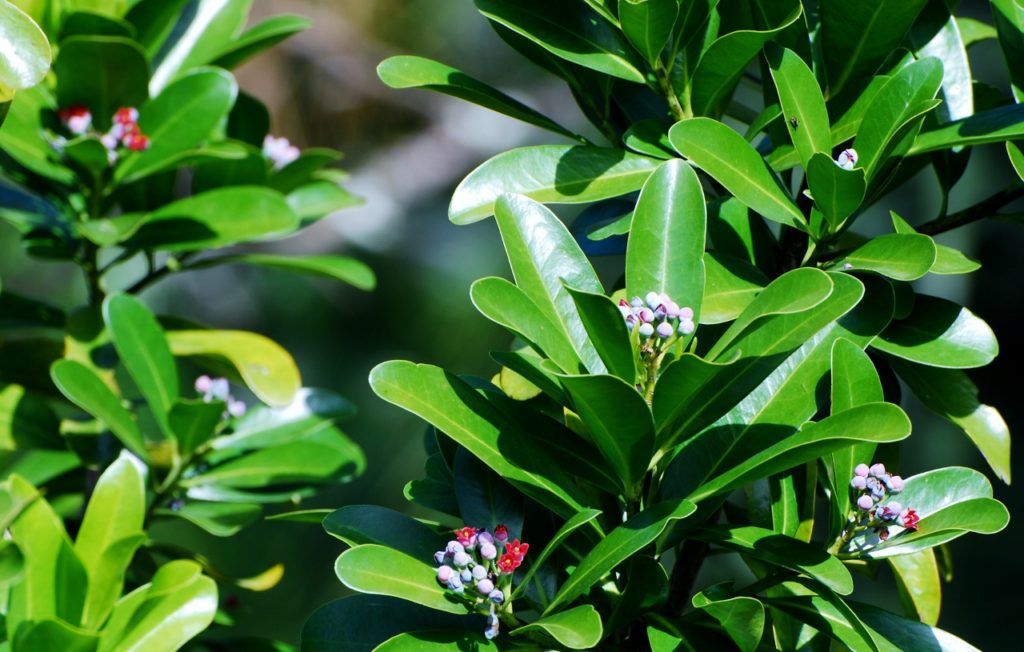Cinnamon Bark
Canella winterana
Cinnamon Bark is one of the most beautiful small trees in South Florida. The bluish oval leaves are three inches long with a pungent cinnamon smell and flavor. The inner bark can be used as a cinnamon replacement, yet the outer bark is poisonous. Hold the leaf a foot or two away when crushing it for the smell or you may end up sneezing as the oils fill the air.
As a single tree, Cinnamon Bark is a bit sparse, yet when grown as triples or more it is full and dense. It takes a few years until the red flowers and red berries are produced, but your patience is rewarded with a fantastic mass of color. The clusters of pea sized berries will attract many birds and give the tree a holly like appearance.
Cinnamon Bark will usually grow to 16 feet or less, yet may reach thirty feet in the wilds where old trees are found. The soil should be rich and can have occasional short term saltwater flooding. Drought tolerance is excellent once established and it can be planted in the back of a coastal hammock where some salt air will reach it.
The natural range is from the coastal hammocks of South Dade County to Key West. It will tolerate a fair amount of cold and can easily be grown in Eastern Palm Beach County. Try building a coastal hammock hedge with Cinnamon Bark, Bitterbush, Wild Coffee, Marlberry, Myrsine, Bahama Wild Coffee, Bahama Strongbark, Myrtle of the River, Jamaica Caper, Indigo Berry and Simpson, Spanish, White and Redberry Stoppers. These are all upright and compact and won’t push each other out.
